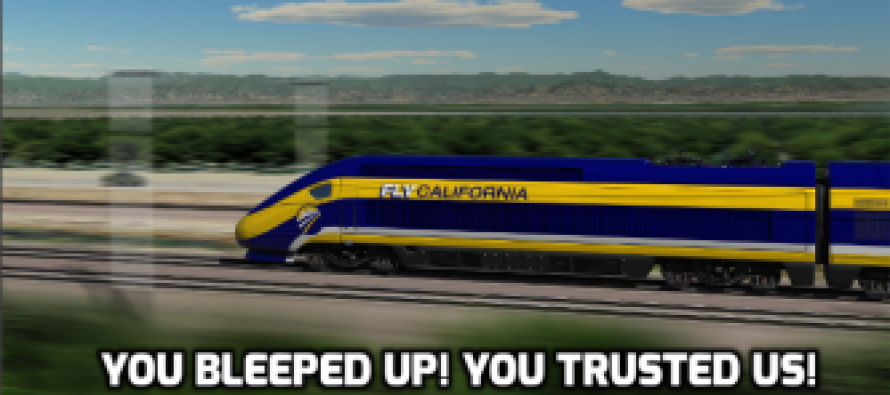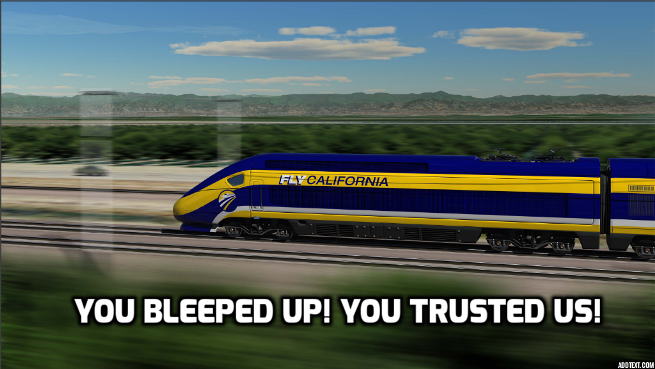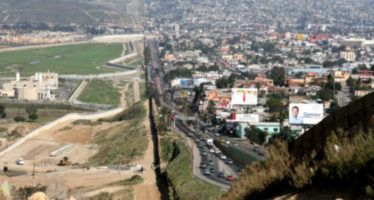Speed promises for bullet train? CA says ‘never mind’

In 2008, California voters narrowly approved $9.95 billion in funds for a statewide high-speed rail network. When they voted for Proposition 1A, they didn’t think there was much doubt about what they were getting — a “safe, reliable, high-speed passenger train” was the mantra of Gov. Schwarzenegger and other project supporters.
Then there were the formal claims to voters in official election materials.
In the official summary, there was a reference to a train that would average 220 mph from San Francisco to Los Angeles. There was another reference in the official analysis, and another in the official rebuttal to the official argument against the project.
For good measure, the official argument for 1A stated that it would provide for “Travel from Los Angeles to San Francisco in about 2½ hours for about $50 a person.” And the official rebuttal of the argument against 1A said project critics were making things up, and the the measure would allow for “travel intercity downtown to downtown throughout California on High-Speed Trains faster than automobile or air—AT A CHEAPER COST!”
Doesn’t seem particularly ambiguous, does it?
Could go that fast vs. would go that fast
But that is just what the California High-Speed Rail Authority seems likely to argue at the upcoming court hearings over a lawsuit saying the project can’t conceivably meet the requirement that the train get from San Francisco to Los Angeles — some 520 miles — in two hours and 40 minutes, as specified in the text of the law.
I wrote about the coming bait-and-switch on the speed question this weekend for the U-T San Diego:
Since initial segments in the Bay Area/Silicon Valley and in Los Angeles County will not have trains going at high speed, this requirement seems impossible. It would require a train that averages about 270 mph for a twisty 400-mile stretch from Fresno to the San Fernando Valley.
So how will state officials respond? Apparently with semantic games — the assertion that the fine print of Proposition 1A only requires that the train system’s “design” could achieve a trip time of two hours and 40 minutes or less, not that it necessarily would do so on regular basis. …
[In] an email published by The Atlantic’s website last week, board Chairman Dan Richard wrote that the state is “maintaining fidelity to the bond act requirements” of a train “designed to get from Los Angeles to downtown San Francisco in less than two hours, 40 minutes.”
What’s particularly insulting here is that both in the email to The Atlantic and to comments to The Los Angeles Times last month, Richard asserted the rail authority would never “parse” Prop 1A to get out of honoring its plain intent.
I guess that depends on what Richard’s definition of “parse” is. The usual Clintonian definition of parsing is hunting for a way to get out of trouble or get out of an obligation by using narrow definitions of broad, pain language in a way that serve your interests.
That is exactly what the state government is doing here. As I wrote in the U-T …
… what the state government is now doing to keep the bullet train alive amounts to the biggest bait-and-switch ever pulled on the voters of California. Even by Sacramento’s low standards, it is a shabby dirty trick.
Related Articles
More than 450 unfilled Border Patrol jobs in Imperial, San Diego counties
The Border Patrol has a hiring problem that’s particularly acute in southeastern California, according to a new Government Accountability Office
Crime Hikes Don't Cause Prison Crowds
DEC. 31, 2010 By WAYNE LUSVARDI and RICH McKONE We have all seen the TV videos of the overcrowded conditions
A tax in sheep’s clothing
Sept. 6, 2012 By Katy Grimes A standard of the Republican Party platform is “no new taxes and less regulation.”




